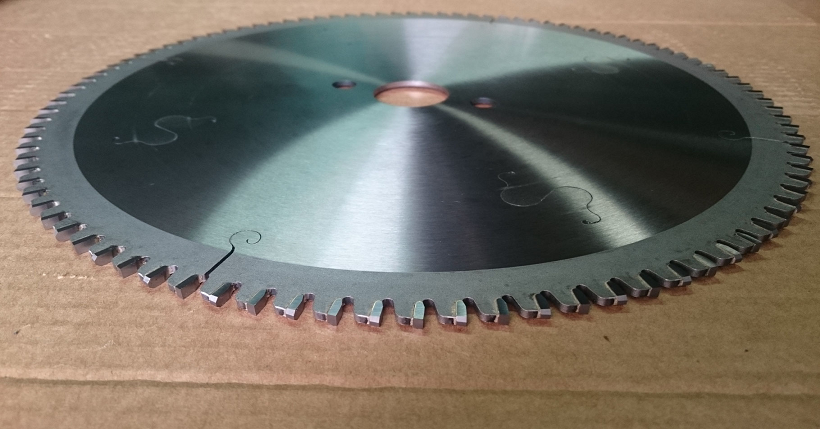Circular Saw Blade Features and Information
Our product selection consists of high-quality circular saw blades available for use in portable, cordless and stationery saws. Saw blades are available in configurations for most applications, from general purpose blades to highly specialized designs. Everything depends on how much blade you want, and that’s often a question of construction material and amount of use.

Circular Saw Blade and Terms:
Below is a list of Circular Saw Blade terms and illustrations to assist you in selecting the right blade for the right job:
Anti-kick Saw Blades: A particular Circular Saw Blade’s (CSB) shoulder design that is engineered to improve the ease of cut and reduce the effect of the saw blade kicking back due to overfeeding. Arbor: The saw motor shaft that rotates the saw blade. Often referred to as the mandrel.
Bore: The arbor by which the saw blade is mounted on the saw. Available in various sizes. Bore size on the blade.
Bevel: Angles on a carbide tooth CSB. Teeth can have a single bevel, two bevel or no bevel at all. Types of bevels can alternate from tooth to tooth on a given blade. The bevel is what gives the blade its specific cutting pattern.
Chipper: A cutting tool that is placed between the outside blades of a dado set to adjust the width of the cut.
Chipping: The condition caused when the saw blade lifts and tears the wood fibers as it exits the material. This causes the edges to be ragged.
Coating: Specially formulated coatings that stay slick. Coating a blade reduces heat in 2 ways. It minimises friction and binding and resists pitch and gum buildup.
Combination Saw Blade: Saw blades used for both ripping (cutting with the grain of the wood) and crosscutting (cutting across the grain).
Crosscut: To cut or saw against/across the grain of the wood. Cutter: Outside blades used in dado blades.
Expansion slots: The spaces that allow a blade to expand as it heats up during cutting. It eliminates warpage by cooling the blade. Ferrous: Of or containing iron.
Finishing Saw Blade: A saw blade with a higher tooth count to provide smoother cuts. Typically refers to 7 1/4 inch blades with more than 40 teeth and 10 inch blades with more than 60 teeth. Framing Saw Blade: Carbide tipped saw blades used to make fast cuts in all types of wood (the fastest cutting is achieved with lower tooth count saw blades).
Kerf: This is the width of the cut, including the steel plate thickness plus any overhang on a carbide blade.
General Purpose Saw Blades: Lower tooth count saw blades. Used primarily for fast cross cutting and ripping.
Gullet: The space between teeth that clears the work piece or chips after the cut.
Grind: There are many types of tooth grinds, a few of the basic ones are:
Flat Top Grind (FTG) – Best for ripping.

Alternate Top Bevel (ATB) – for crosscutting, cutoff and trimming.

Triple Chip Grind (TCG) – perfect for hard abrasive materials like non-ferrous metals, hard woods and plastics.

Tri-Grind (TRI) – Combination grind

Hollow Ground: A concave bevel edge on a tool.
Hook angle: The “attack angle” of the teeth. Harder, more brittle materials need a shallower angle to ease pressure against the materials and reduce chip out. Soter materials require a sharper angle to reduce chip out.
Miter: The process of cutting material for an equal angle joint. Nonferrous: Materials or metals not of or containing iron, such as aluminium, copper, brass and lead.
Plate: The steel body of the carbide blade on which the teeth are welded. Plane: In woodworking, to make a surface smooth or even.
Rabbit: An open-ended cut made along the edge of a work piece that receives or interlocks with another piece to form a joint.
Ripping: The process of sawing a board in the direction of the grain of the board.
Run out: The amount of left to right movement a saw blade makes during operation. Often referred to as wobble or warp.
Stiffening Collar: A flat collar that mounts on the saws arbor directly next to the blade. They are used to make more accurate cuts and dampen the sound the saw generates.
Shim: A thin, often tapered piece of material such as metal or wood used to fill in space between things. In dado operations, a round disk used to make a wider cut.
Tear-out: A condition in which the saw blade tears out the grain of a work piece.
Tempered: To bring the steel plate of a saw blade to a desired hardness by reheating and cooling.
Thin kerf saw blades: A saw blade with a reduced kerf, or cut width.














